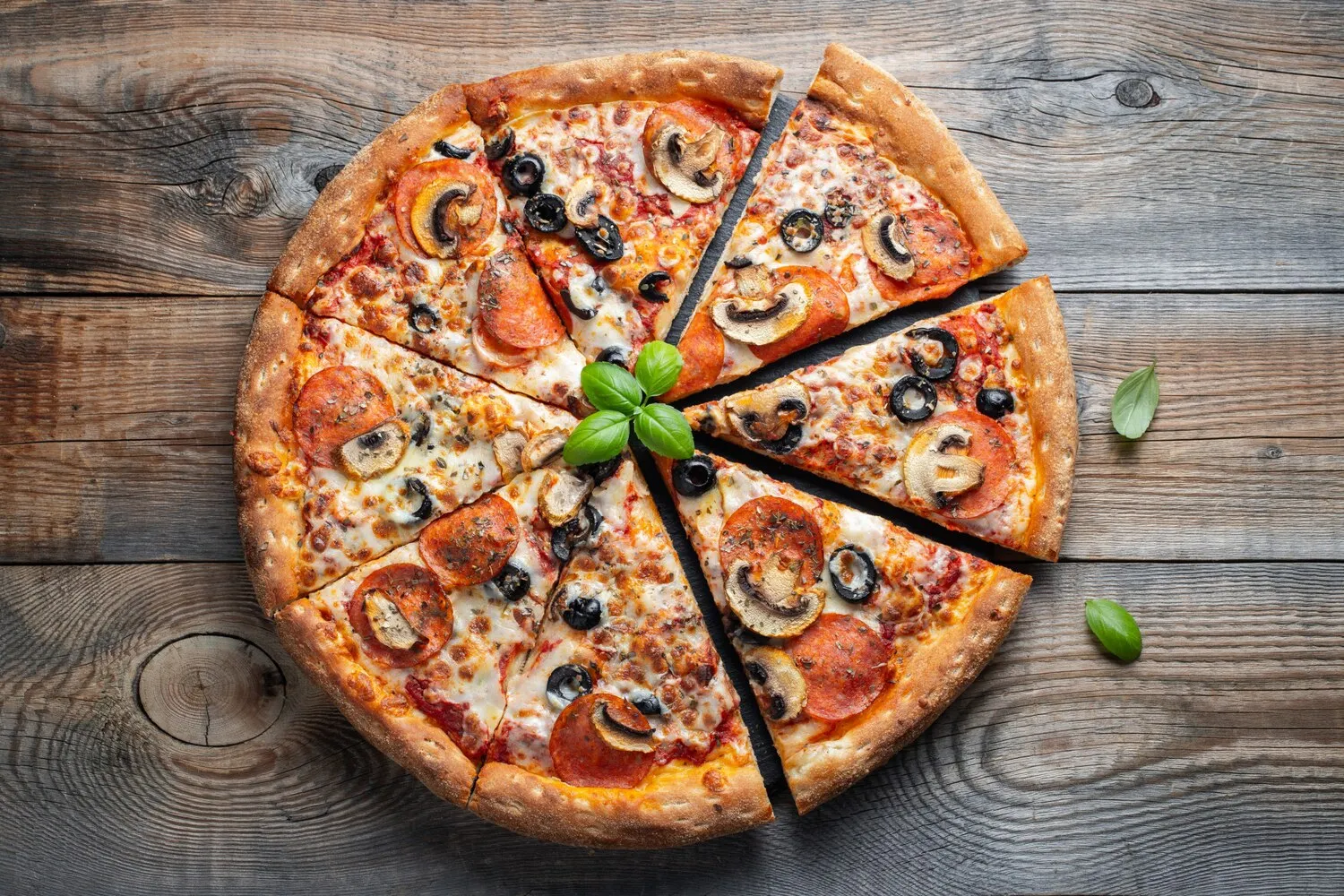
Pizza
Biga Genio e Farina is known for its pizza, prepared with high-quality ingredients and a long fermentation process.
Nutrition Facts
* The % Daily Value (DV) tells you how much a nutrient in a serving of food contributes to a daily diet. 2,000 calories a day is used for general nutrition advice.
Pizza's history traces back to ancient flatbreads, but the modern pizza we know today emerged in Naples, Italy, in the 18th century. It evolved from street food for the poor to a global phenomenon. Tomatoes, initially considered poisonous, eventually became a defining ingredient.
Pizza is deeply embedded in Italian culture and has become a symbol of sharing, conviviality, and family meals. Its adaptability has allowed it to become a global comfort food, celebrated and adapted across different cultures.
Social Gathering Food
Pizza is often enjoyed in social settings, from casual gatherings with friends to family dinners. Sharing a pizza encourages interaction and creates a sense of community.
Regional Variations
Italy boasts many regional pizza variations, each reflecting local ingredients and culinary traditions. For example, Roman-style pizza is known for its thin and crispy crust, while Sicilian pizza (sfincione) is thick and spongy.
Global Adaptation
Pizza has been adapted globally to reflect local tastes and ingredients. You can find pizza with unique toppings, such as pineapple in some countries, reflecting a globalized culinary landscape.
Pizza boasts a diverse range of flavors dependent on toppings, but the core flavors revolve around the interplay of dough, tomato sauce, and cheese. Herbs like basil and oregano contribute aromatic notes, while toppings can add savory, spicy, or sweet elements.
The foundational flavor comes from the pizza dough itself, which should have a slightly yeasty and subtly sweet taste, often enhanced by salt and olive oil. Tomato sauce provides a tangy, acidic base that balances the richness of the cheese. Mozzarella is the most common cheese, contributing a mild, milky flavor and a stretchy texture. Toppings introduce a wide array of potential flavors, from the salty and savory pepperoni and sausage to the sweet and tangy vegetables like peppers and onions. A drizzle of olive oil and a sprinkle of herbs complete the flavor profile.
Dough Hydration and Fermentation
High hydration doughs (around 70% or higher) produce a lighter, airier crust. A long, cold fermentation (24-72 hours in the refrigerator) develops complex flavors and improves digestibility.
Oven Temperature and Stone Use
A high oven temperature (ideally above 500°F/260°C) is crucial for achieving a crispy crust. Using a pizza stone or steel helps retain heat and ensures even cooking.
Ingredient Quality
Using high-quality ingredients, such as San Marzano tomatoes for the sauce and fresh mozzarella cheese, significantly improves the overall flavor of the pizza.
Explore additional Pizza dishes and restaurants
Explore PizzaDiscover top dining spots and culinary experiences in Palermo.
Explore PalermoLearn more about the food culture, restaurant scene, and culinary heritage of Italy.
Explore Italy